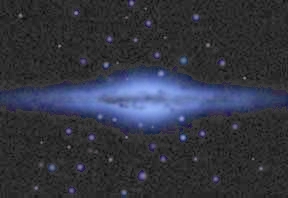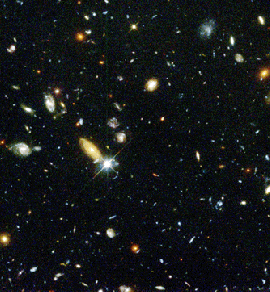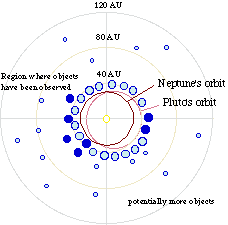What is the farthest thing I can see with my own eyes, and the farthest thing I can see with an amateur telescope, and the farthest-away thing the biggest telescopes on Earth can see?

The most distant object visible to the naked eye is M31, the Andromeda Galaxy, at about 2 million light-years. This is the nearest large galaxy to us, and a very bright one at that. I can't say for certain the most distant object that you can see with an amateur telescope because the size of such telescopes can vary a lot, and because it depends on the detector that you have attached to it (like your eye, film, or an electronic CCD). But you can definitely see galaxies beyond the Local Group, even with your eyes.
If you use a detector such as film or a CCD, you can increase the exposure time, i.e. the length of time that light from the object you are observing is collected. It's like the shutter speed of a camera: slow shutter speed = long exposure time. The exposure time for your eye is fixed at a fraction of a second, not very long. With film or a CCD, you can expose for minutes or even hours, and detect distant galaxies.
The most distant object known and observed with a large optical telescope is the quasar PK 1247 +3406, at a distance of 5000 megaparsecs, the time when galaxies first began to form. The most distant event ever observed with any telescope would be the Cosmic Microwave Background Radiation, light which is a remnant of the Big Bang.
Submitted by Ben (Maryland, USA)
(June 8, 1998)
You might also be interested in:

When you look out into space you are actually looking back in time. This is because of the speed of light. Light moves at the speed of 300,000,000 meters/second (186,000 Miles/second). At short distances
...more
In the 1960's a startling discovery was made by accident. A pair of scientists at Bell Laboratories detected some annoying background noise using a special low noise antenna. The strange thing about the
...more
It depends on which type of motion you are asking about. If you take a birds-eye view from the top of the solar system all the planets orbit around the Sun in a counter-clockwise (or direct) direction.
...more
Almost everyone has a question or two about living in space. What do astronauts do in space? How do they do everyday things like eat, sleep and go to the bathroom? It's important to note that astronauts
...more
There is a really neat internet program called Solar System Live that shows the position of all of the planets and the Sun for any given day. If you go to that page, you'll see an image similar to the
...more
The picture of the American Flag (the one put there by the Apollo astronauts) is waving (or straight out) in the wind. How could that be possible if there is no atmosphere on the Moon? Was it some sort
...more
I was wondering if there is a new planet? Are there planets (a tenth planet?) after Pluto belonging to our solar system? What are the names of the new planets discovered in the solar system? Are there
...more
If that is so, the energy released during the Big Bang must have created many such black holes. Therefore most of the Energy of the Big bang must have disappeared in that form. Then how did the Universe
...more















